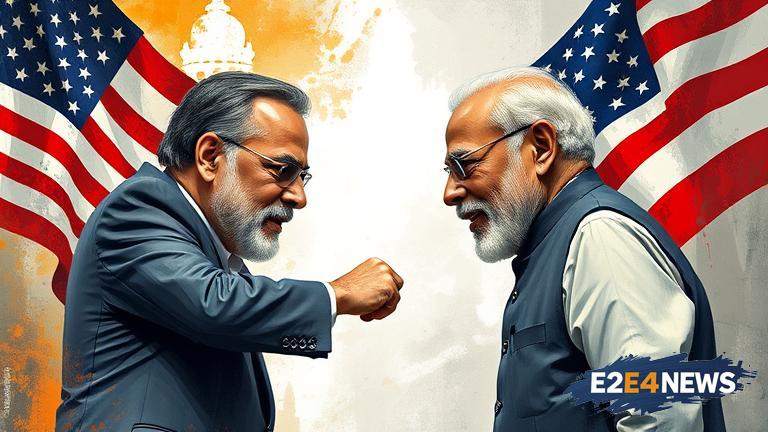The US-India relationship, once hailed as a cornerstone of global diplomacy, has hit a rough patch in recent months. The friendship between US President Donald Trump and Indian Prime Minister Narendra Modi, which was once considered a key factor in strengthening ties between the two nations, has given way to a series of diplomatic disagreements and trade tensions. The two leaders, who were once known to exchange warm words and praise each other, are now engaged in a war of words over issues such as trade, tariffs, and immigration. The tensions between the two nations have been simmering for months, with the US imposing tariffs on Indian goods and India retaliating with its own set of tariffs on American products. The trade tensions have been further exacerbated by the US decision to withdraw India’s preferential trade status, which has been in place for decades. The move has been seen as a major blow to India’s exports, and has sparked widespread outrage in the country. The diplomatic tensions between the two nations have also been fueled by disagreements over issues such as Kashmir, with the US calling for a peaceful resolution to the dispute and India accusing the US of interfering in its internal affairs. The tensions have been further complicated by the US decision to impose sanctions on India over its purchase of Russian military equipment, which has been seen as a major setback for the country’s defense modernization plans. Despite the tensions, both countries have been trying to find ways to resolve their differences and strengthen their relationship. The US has been trying to persuade India to join its Indo-Pacific strategy, which aims to counter China’s growing influence in the region. India, on the other hand, has been seeking to strengthen its ties with the US in order to counterbalance China’s growing power in the region. The two countries have also been cooperating on issues such as counter-terrorism and cybersecurity, and have been working together to promote economic growth and development in the region. However, the tensions between the two nations have been a major setback for the relationship, and have raised questions about the future of US-India ties. The relationship between the two nations has been further complicated by the upcoming US presidential elections, with some analysts predicting that a change in administration could lead to a significant shift in US policy towards India. The Indian government has been watching the developments in the US closely, and has been trying to strengthen its ties with other countries in the region in order to reduce its dependence on the US. The tensions between the US and India have also been fueled by the growing rivalry between the two nations in the tech sector, with both countries competing for dominance in the global market. The US has been trying to persuade India to adopt its technology standards, while India has been seeking to promote its own domestic tech industry. The competition between the two nations has been further exacerbated by the US decision to impose restrictions on Indian tech companies, which has been seen as a major setback for the country’s tech sector. Despite the tensions, both countries have been trying to find ways to cooperate on issues such as artificial intelligence and cybersecurity, and have been working together to promote innovation and entrepreneurship in the region. The US-India relationship has been a key factor in promoting global stability and security, and has been seen as a major success story in international diplomacy. However, the tensions between the two nations have raised questions about the future of the relationship, and have sparked concerns about the impact on global stability and security. The Indian government has been trying to strengthen its ties with other countries in the region, including China and Russia, in order to reduce its dependence on the US. The move has been seen as a major shift in India’s foreign policy, and has raised questions about the country’s commitment to its relationship with the US. The tensions between the US and India have also been fueled by the growing rivalry between the two nations in the energy sector, with both countries competing for dominance in the global market. The US has been trying to persuade India to adopt its energy standards, while India has been seeking to promote its own domestic energy industry. The competition between the two nations has been further exacerbated by the US decision to impose sanctions on India over its purchase of Iranian oil, which has been seen as a major setback for the country’s energy sector.





